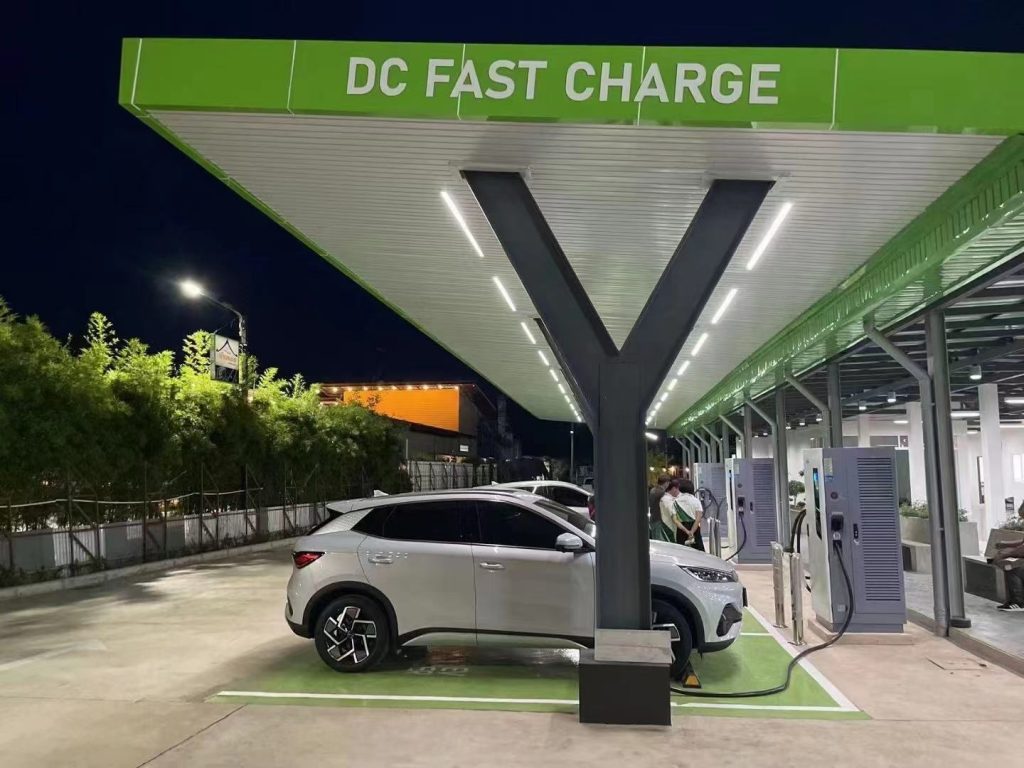
Products
Fast, Reliable, Everywhere

Solutions
Efficient, Innovative EV Charging Solutions.
News
We are committed to the innovation and application of EV charging.
As an environmentally friendly and economical mode of transportation, electric vehicles (EVs) are becoming increasingly popular. Charging is a crucial aspect of EV usage. For many owners, the priority is to charge their vehicles quickly and efficiently. DC charging (Direct Current charging) is an ideal solution to this need. This article provides detailed information about DC charging to help EV owners better understand DC battery charger facilities.
Electric vehicle batteries store energy as direct current (DC), while the power grid supplies alternating current (AC). An onboard charger in the vehicle converts AC to DC to charge the battery. DC fast charging bypasses the onboard charger and directly supplies DC to the battery, significantly reducing charging time. The AC to DC conversion occurs within the DC charging station, which then outputs DC to the vehicle. DC fast charging, also known as DCFC (Direct Current Fast Charging) or Level 3 charging, offers a faster charging experience compared to AC charging.

In the United States, two main types of DC fast charging connectors are used: CCS (Combined Charging System) and CHAdeMO.
| Connector Type | Technical Description | Charging Compatibility | Regions |
| CCS | Combines AC and DC charging, supporting up to 350 kW. | Broad compatibility, including Volkswagen, BMW. | Europe, North America, parts of Asia. |
| CHAdeMO | Provides up to 62.5 kW of DC power for fast charging | Compatible with brands like Nissan and Mitsubishi. | Japan, USA, parts of Europe. |
Advantages:
Disadvantages:
DC fast charging rates and EV acceptance rates are intertwined. Here are some data tables that demonstrate the relationship:
| Charge rate (kW) | Acceptance rate (%) | note |
| 50 | 90 | Most electric cars are acceptable |
| 150 | 70 | Some electric vehicles have reception restrictions |
| 350 | 50 | High-end electric vehicles only |
Charging stations are classified by the voltage level of the power supply. Level 1 chargers connect to a 120-volt AC supply, Level 2 to a 240-volt AC supply, and Level 3 to a 480-volt DC supply. Higher voltage levels correspond to greater power output potential.
Charging stations are categorized into different levels depending on the supply voltage:
| Charging Station Level | Power Supply Voltage (V) | Description |
| Level 1 | 120 V AC | Suitable for home charging. |
| Level 2 | 240 V AC | Suitable for public charging. |
| Level 3 | 480 V DC | Suitable for fast charging. |
DC fast charging (DCFC) stations directly supply DC to the EV battery, offering much faster charging than traditional AC charging. The basic process includes:
Fast Charging Process
Once connected to a DC charging station, the charging process involves several stages:

The expansion of DC charging stations is growing to meet market demand, providing more efficient and convenient charging solutions for EV owners. This expansion not only promotes the adoption and development of EVs but also enhances their practicality and accessibility. We believe that with the continued proliferation of DC charging stations and advancements in technology, electric vehicles will become the preferred mode of transportation for an increasing number of people.
